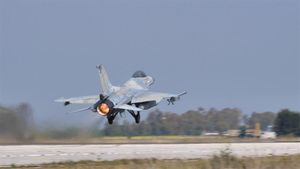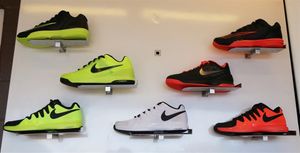
Medical technology company Stryker (NYSE: SYK) announced better-than-expected revenue in Q1 CY2025, with sales up 11.9% year on year to $5.87 billion. Its non-GAAP profit of $2.84 per share was 4% above analysts’ consensus estimates.
Is now the time to buy SYK? Find out in our full research report (it’s free).
Stryker (SYK) Q1 CY2025 Highlights:
- Revenue: $5.87 billion vs analyst estimates of $5.68 billion (11.9% year-on-year growth, 3.2% beat)
- Adjusted EPS: $2.84 vs analyst estimates of $2.73 (4% beat)
- Adjusted EBITDA: $1.45 billion vs analyst estimates of $1.42 billion (24.7% margin, 2% beat)
- Adjusted EPS guidance for the full year is $13.33 at the midpoint, missing analyst estimates by 1%
- Operating Margin: 14.3%, down from 18.5% in the same quarter last year
- Free Cash Flow Margin: 2.2%, up from 0.7% in the same quarter last year
- Organic Revenue rose 10.1% year on year, in line with the same quarter last year
- Market Capitalization: $149.9 billion
StockStory’s Take
Stryker’s first quarter results reflected healthy demand across both its MedSurg & Neurotechnology and Orthopaedics divisions, with management highlighting double-digit growth in its U.S. trauma, extremities, neurocranial, and surgical technologies segments. CEO Kevin Lobo emphasized the outperformance of new product platforms, especially the Mako robotic system and Pangea trauma plating system, as key contributors to market share gains. Management also pointed to continued strength in international markets, particularly Australia, New Zealand, Japan, and Europe, as a foundation for ongoing growth.
Looking ahead, Stryker’s 2025 guidance reflects the company’s expectation for continued high-single-digit organic sales growth, while acknowledging several headwinds. CFO Preston Wells noted that tariffs—estimated to impact costs by $200 million this year—will require ongoing mitigation through pricing, supply chain optimization, and disciplined spending. Management cited strong order backlogs and robust demand for capital equipment as supportive factors, but recognized supply chain disruptions in the medical business and the need to integrate recent acquisitions like Inari Medical as considerations for the remainder of the year.
Key Insights from Management’s Remarks
Stryker’s management attributed the quarter’s performance to broad-based demand, new product uptake, and successful execution in core and emerging markets. The following insights summarize the major drivers behind the company’s recent financial results:
- Robotic Surgery Momentum: The Mako robotic platform set a Q1 record for installations, with high utilization rates globally. Management expects continued growth in hips and knees as Mako expands into new indications and geographies.
- Product Innovation Pipeline: Recent launches, such as the LIFEPAK 35 defibrillator and the Pangea trauma plating system, drove meaningful sales growth. LIFEPAK 35 is set to expand into Europe and Japan, while Pangea will enter Australia and Canada this year and Japan in 2026.
- International Expansion: Stryker underscored strong growth in Australia, New Zealand, Japan, and Europe, citing these markets as significant future catalysts. The company expects regulatory delays to cause a lag between U.S. and international product uptake, but sees a multi-year runway for international sales.
- M&A and Portfolio Optimization: The acquisition of Inari Medical was completed, integrating into the vascular division. Stryker also finalized the sale of its U.S. Spinal Implants business, sharpening its strategic focus and capital allocation.
- Capital Equipment Demand: Management reported double-digit growth across capital businesses and stated that hospital capital spending remains robust, with a healthy order backlog and no current signs of a slowdown.
Drivers of Future Performance
Management expects Stryker’s growth to be shaped by ongoing product launches, international expansion, and efforts to offset tariff-related cost pressures. The company’s outlook is rooted in strong procedural demand, but it faces operational and macroeconomic uncertainties.
- Tariff Mitigation Efforts: Stryker plans to counteract the estimated $200 million tariff impact through pricing strategies, expense discipline, and supply chain optimizations. CFO Preston Wells noted that gross and operating margin improvement will depend on successfully executing these measures.
- Capital Equipment Backlog: The elevated order book for capital equipment is expected to support sales growth through the year, with management citing a six-month visibility into demand.
- Integration of Acquisitions and Divestitures: The performance of newly acquired Inari Medical and the transition of the U.S. Spinal Implants business out of the portfolio are expected to influence both revenue growth and margin profiles in coming quarters.
Top Analyst Questions
- Marcus Robert (JPMorgan): Pressed on how Stryker will absorb the $200 million tariff impact and what mitigation levers are most effective. Management cited sales momentum, pricing, and discretionary spending as key tools.
- Larry Biegelsen (Wells Fargo): Asked about the sustainability of operating margin expansion despite tariffs, with Preston Wells clarifying that margin gains will come from both gross margin and operating expense initiatives.
- Joanne Wuensch (Citi): Inquired about the ongoing integration of Inari Medical and whether there were any surprises post-acquisition. Management reported favorable early results and cultural alignment.
- Ryan Zimmerman (BTIG): Sought details on the international hip business’s growth durability, with CEO Kevin Lobo attributing strong results to recent acquisitions and pending product launches in Europe and Asia-Pacific.
- Travis Steed (Bank of America): Questioned the details and geographic exposure of the tariff impact, as well as mitigation strategies for 2026. Management said future plans remain flexible due to the changing environment.
Catalysts in Upcoming Quarters
In the coming quarters, the StockStory team will closely monitor (1) the rollout and adoption pace of new products such as Mako 4 and LIFEPAK 35 in both U.S. and international markets, (2) Stryker’s ability to offset tariff-related cost pressures through pricing and operational efficiency, and (3) ongoing strength in capital equipment demand and procedural volumes globally. Additionally, we will watch for integration milestones with Inari Medical and any updates regarding regulatory changes or supply chain disruptions.
Stryker currently trades at a forward P/E ratio of 28.4×. Should you double down or take your chips? See for yourself in our free research report.
Stocks That Trumped Tariffs in 2018
Market indices reached historic highs following Donald Trump’s presidential victory in November 2024, but the outlook for 2025 is clouded by new trade policies that could impact business confidence and growth.
While this has caused many investors to adopt a "fearful" wait-and-see approach, we’re leaning into our best ideas that can grow regardless of the political or macroeconomic climate. Take advantage of Mr. Market by checking out our Top 6 Stocks for this week. This is a curated list of our High Quality stocks that have generated a market-beating return of 176% over the last five years.
Stocks that made our list in 2020 include now familiar names such as Nvidia (+1,545% between March 2020 and March 2025) as well as under-the-radar businesses like the once-micro-cap company Tecnoglass (+1,754% five-year return). Find your next big winner with StockStory today.





